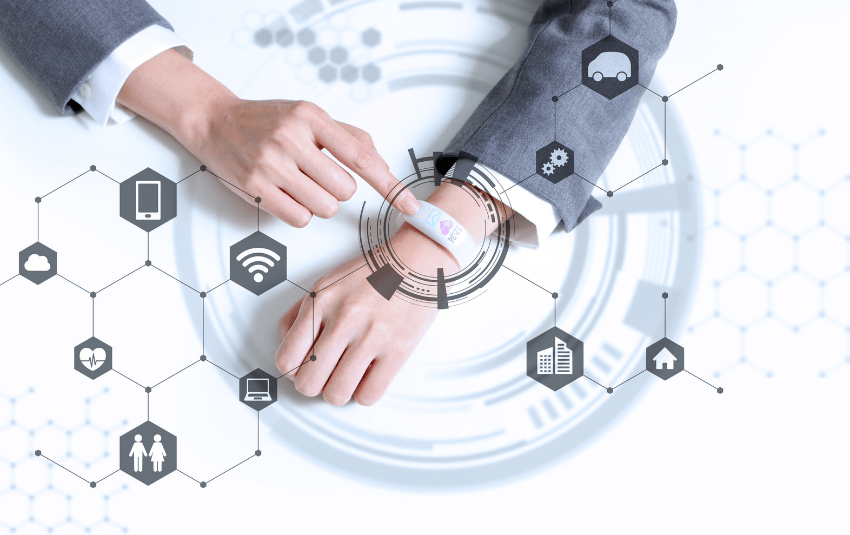An electrocardiogram (ECG) refers to a test done to check the heart’s rhythm and electrical activity. ECG machines available at clinics and hospitals come with about 10 to 12 leads which are sensors that attach to one’s skin. With these sensors, the machine can then record the electrical signals produced by the heart accurately.
A wearable ECG device comes in different forms and can be used to record heart activity on the go. This is ideal for users who wish to track their heart health without disrupting their daily activities.
On top of being more convenient, the added benefit is that it may be able to identify trends that a one-time ECG machine test may not. However, because of its portability, it usually comes with 1 or 2 leads which may not pick up heart activity as accurately as a hospital-grade ECG.
In this article, we share more about the different types of wearable ECG devices, their pros and cons, factors to consider when buying one and tips for getting a more accurate reading.
- Types of Consumer Wearable ECG Devices
- Pros of Wearable ECG Devices
- Cons of Wearable ECG Devices
- Factors To Consider When Choosing a Wearable ECG Device
- Tips For Using a Wearable ECG Device
- Frequently Asked Questions About Wearable ECG Devices
Types of Consumer Wearable ECG Devices
There are a few main types of consumer wearable ECG devices in the market. Each of them work similarly to allow users to check their heart rhythm while on the go.
Smartwatches and fitness trackers
What are they?
Smartwatches and fitness trackers may come with an ECG function that can track the user’s heart rate. This can detect signs of arrhythmia (irregular heart rhythm) which is a cause of stroke.
How do they work?
An ECG can be taken with a smartwatch if there is a complete electrical circuit around the user’s body. While wearing the watch, the user has to launch the phone app and place a finger on a specific part of the watch to complete the circuit.
Within a few minutes, the watch will be able to measure the user’s heart activity and deduce if it is normal.
ECG patches
What are they?
ECG patches are small, extremely portable devices that are attached to the body. They are used to receive and transmit electrical signals of the user’s heart activity.
How do they work?
A wearable ECG patch is equipped with an electrocardiography sensor and accelerometer to detect and record physiological data. Similar to smartwatches, ECG patches can be synced with a device such as a phone or tablet to display the results.
Chest straps
What are they?
A chest strap ECG has a portable sensor attached to a strap. This can be worn under the user’s shirt to track the heart rate even while exercising.
How do they work?
Electrode sensors are usually embedded in the chest strap such as when a user wears it, it can detect the heart’s electrical activity. The strap may be made of fabric, plastic or rubber.
The data collected can also be synced to a device like a phone or tablet.
Clothing and shoe-embedded sensors
What are they?
These refer to clothing or shoes that have been embedded with sensors to track the user’s heart activity. The sensors can come in the form of a strap or patches embedded within the clothing.
How do they work?
The fabric electrodes included in clothing and shoes act as sensors to record electrical signals from the heart. Results can be easily monitored via a synced device.
These apparel can be easily incorporated in a user’s daily activities since it does not require any additional wearables.
Pros of Wearable ECG Devices
Lightweight and portable
As compared to ECG machines, wearable devices are lightweight and portable. This means that patients need not schedule an appointment with their doctor in order to get a quick analysis of their heart activity. It can be done almost anywhere and any time with wearables.
Able to identify potential problems early
Taking an ECG test at the clinic may not provide a full picture of a patient’s health condition. Having a wearable device allows one to record heart activity more conveniently and for a longer period of time. This enables doctors to identify any trends that may indicate problems. Early detection is also made possible.
Shareability of data
On top of being able to track heart activity anytime, patients can also sync the collected data with their doctor. From there, they can track their heart health easily together with their caregivers.
In Asia Pacific, companies have begun to digitize healthcare in the area of telemedicine. Elisabeth Staudinger from Siemens Healthineers shares that digital healthcare is benefitting over one billion people in the region today. The shareability of data from wearable ECGs can contribute to achieving an improved, 24/7 healthcare system.
Cons of Wearable ECG Devices
Limited data
Wearables can only provide basic information on the go, such as heart rhythm and rate. Some may also be able to measure blood pressure.
While wearable ECGs may detect heart rhythm abnormalities, they cannot detect other cardiovascular conditions such as heart attack, high cholesterol and stroke. This limited data only serves as a gauge of the patient’s overall heart health as it does not provide the full picture.
For a comprehensive analysis, patients will need to head to a clinic with a hospital-grade ECG machine.
May not be accurate
Wearable ECG devices typically come with 1 or 2 leads (contact points on the body). On the other hand, hospital-grade ECGs have 12 leads which makes them more sensitive.
This means that wearables can pick up electrical signals from the heart, but not as accurately as a hospital-grade ECG.
Furthermore, the accuracy of wearables can also be affected if the user does not use it as instructed or has sweat or moisture on their skin where it comes into contact with the device.
Factors To Consider When Choosing a Wearable ECG Device
Aside from considerations such as price and design, users should also consider the following factors when choosing a wearable ECG device:
Comfort
The wearable device will come into contact with the user’s body during the duration of the analysis. Thus, it is important to ensure that it is comfortable to wear and can operate with minimal disruption to one’s daily activities.
Ease of use
Since wearable devices are targeted at consumers, the device should be easy to use especially for those who are not as familiar with technology.
Consider one that is easy to set up, use and interpret. That would make one less challenge for users and will encourage them to take charge of their heart health.
Data storage and sharing
Patients who are required to share readings with their doctors should look at devices that have data storage and sharing capabilities. This enables the storage of previous readings and reports can be easily shared with others.
Recording duration
Different wearable devices come with varying maximum recording durations. For example, most smartwatches can only record heart activity for 30 seconds and chest straps can usually only record up to 15 minutes.
A device that has a longer recording duration is more likely to detect any transient or asymptomatic arrhythmias.
Tips For Using a Wearable ECG Device
To achieve a more accurate reading on a wearable ECG device, it would help to do the following:
- Take some time to sit and cool down before the test
- Prevent exercising or increasing heart rate before the test
- Do not drink cold water just before the test as it may affect the electrical activity recorded
- Remove any metallic objects near or on the user e.g., jewelry
- Shave any hair on the chest (for patches or chest straps) or wrist (for watches)
- Ensure that the skin is dry before wearing the device
- Take the test in a room at a moderate temperature to avoid shivering
Frequently Asked Questions About Wearable ECG Devices
Are wearable or clinical ECG devices better?
Hospital-grade ECGs have 12 leads (points of contact on the body) and are more sensitive. Hence, they are more accurate as compared to wearable ECG devices which only have 1 or 2 leads.
Additionally, if there is sweat or moisture on the user’s skin or if not used as instructed, wearable ECGs may be less accurate.
The benefit of wearable devices over clinical machines is that they are portable for everyday use. They may also be able to spot trends and potential issues that a one-time clinical ECG may not be able to identify.
To achieve a full picture of one’s heart health, it would be good to schedule an ECG test at the clinic every 6 months and track heart activity with a wearable device in between appointments.
What problems can a wearable ECG device highlight?
A wearable ECG device can potentially highlight symptoms of the following types of arrhythmias:
- Atrial fibrillation
- Tachycardia
- Bradycardia
- Heart pause
- Premature atrial or ventricular contractions
Note that the conditions listed above are non-exhaustive and the problems that a device can highlight will depend on its functions and capabilities.
What should I do if my ECG device highlights abnormalities in my heart health?
Users that notice abnormalities in their heart health should save the relevant data and write down any physical feelings experienced when the abnormality was recorded. Once done, send it to the doctor for a deeper analysis.
However, do seek immediate medical attention if you experience any of the following:
- Chest pain
- Tightness or pressure in chest
- Lightheadedness or dizziness
- Nausea
- Shortness of breath
- Heart palpitations
- Fast heart rate





